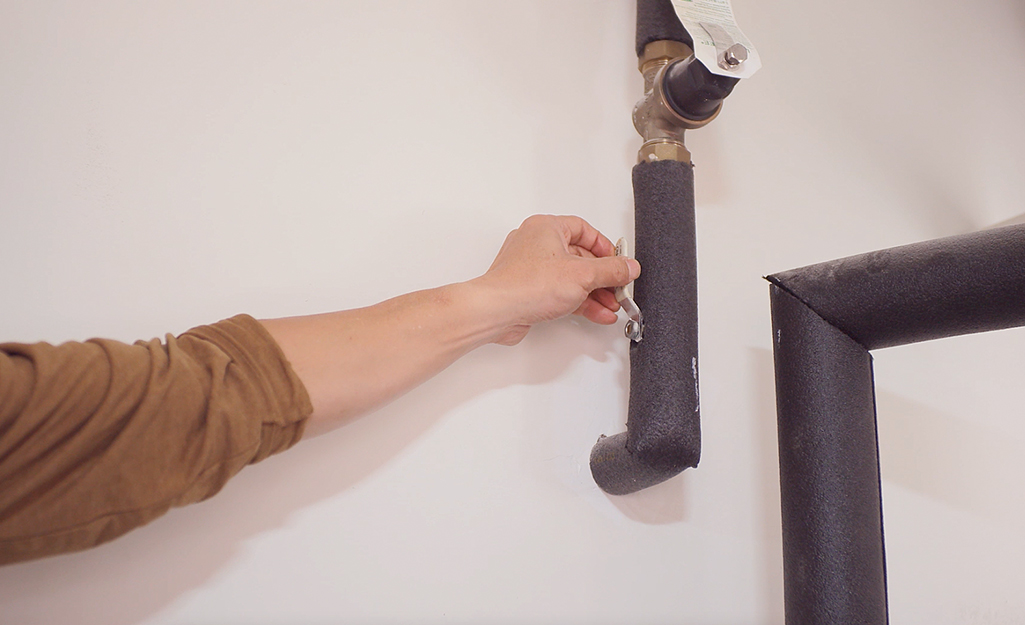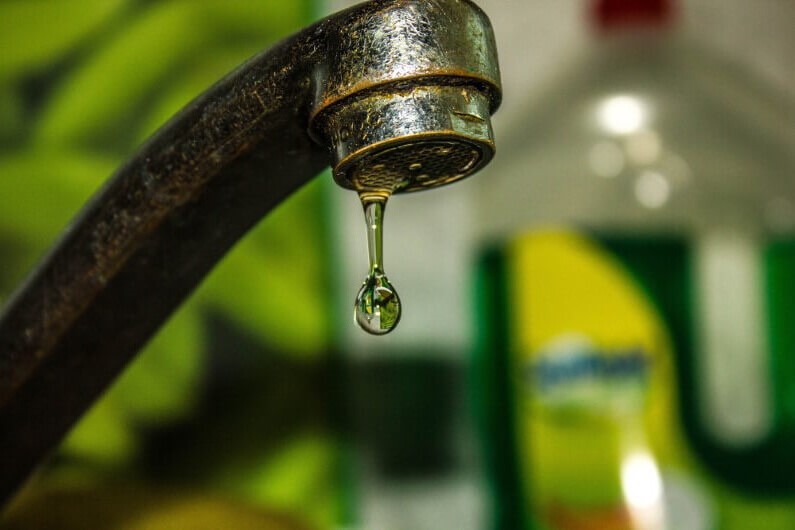Why It's Vital to Fix a Malfunctioning Faucet
Why It's Vital to Fix a Malfunctioning Faucet
Blog Article
Everyone seems to have their unique thinking involving What Causes Leaky Faucets & How To Fix Them.

Dripping faucets might look like a minor trouble, however their effect exceeds just the annoyance of the sound. From drainage to sustaining unnecessary financial prices and wellness dangers, disregarding a dripping tap can cause various effects. In this post, we'll delve into why it's crucial to resolve this typical house problem promptly and successfully.
Waste of Water
Ecological Effect
Trickling faucets add considerably to water waste. According to the Epa (EPA), a single tap dripping at one drip per second can squander greater than 3,000 gallons of water each year. This not only stress water sources yet also affects environments and wild animals depending on them.
Step-by-Step Guide to Taking Care Of a Dripping Tap
Devices Needed
Before trying to take care of a leaking tap, gather the required tools, including an adjustable wrench, screwdrivers, replacement parts (such as washers or cartridges), and plumber's tape.
Common Tap Issues and Their Solutions
Recognize the sort of tap and the certain problem causing the drip. Usual issues include damaged washing machines, corroded shutoff seats, or damaged O-rings. Describe producer guidelines or on-line tutorials for step-by-step advice on repair work.
Financial Prices
Boosted Water Bills
Beyond the ecological impact, dripping faucets can blow up water bills considerably. The built up waste over time equates right into greater utility costs, which might have been stayed clear of with timely repair services.
Possible Property Damage
Moreover, long term dripping can bring about harm to fixtures and surface areas surrounding the faucet. Water build-up can trigger staining, deterioration, and even architectural issues if left unattended, leading to extra fixing costs.
Wellness Issues
Mold And Mildew and Mold Growth
The consistent visibility of wetness from a dripping tap creates a suitable atmosphere for mold and mold growth. These fungi not just jeopardize indoor air top quality but likewise pose health and wellness risks, particularly for people with breathing problems or allergies.
Waterborne Illness
Stationary water in dripping taps can come to be a breeding ground for bacteria and other microorganisms, raising the danger of waterborne conditions. Pollutants such as Legionella bacteria thrive in stationary water, potentially bring about major ailments when consumed or inhaled.
DIY vs. Expert Repair service
Benefits and drawbacks of DIY Repair
While some might try to repair a trickling tap themselves, DIY fixings include their own set of difficulties. Without proper knowledge and tools, DIY attempts can aggravate the problem or cause insufficient repairs, extending the trouble.
Benefits of Hiring a Specialist Plumber
Employing a professional plumber makes certain that the underlying reason for the dripping faucet is dealt with effectively. Plumbings possess the experience and devices to identify and repair tap concerns effectively, conserving time and lessening the danger of more damages.
Environmental Responsibility
Private Payment to Conservation
Taking duty for dealing with leaking faucets straightens with broader efforts towards water preservation and environmental sustainability. Every individual's activities jointly make a significant effect on protecting valuable sources.
Sustainable Living Practices
By prioritizing prompt fixings and taking on water-saving behaviors, people add to lasting living practices that benefit both present and future generations.
Preventive Measures
Regular Maintenance Tips
To stop trickling taps, perform regular maintenance such as cleaning up aerators, inspecting for leaks, and changing worn-out components without delay. Furthermore, think about setting up water-saving tools or updating to more effective components.
Importance of Prompt Repair Works
Addressing leaking taps as quickly as they're seen protects against additional water wastefulness and potential damages, inevitably saving both water and money over time.
Influence On Property Worth
Perception of Well-Maintained Residential Or Commercial Property
Maintaining a building in good condition, consisting of resolving upkeep concerns like trickling taps, improves its regarded worth and value amongst possible buyers or renters.
Impact on Resale Worth
Properties with well-kept plumbing fixtures, consisting of faucets, command greater resale worths in the property market. Dealing with dripping faucets can contribute to a favorable impact throughout residential or commercial property inspections and arrangements.
Verdict
Attending to a dripping tap exceeds mere ease; it's a vital step toward preserving water, decreasing economic costs, and securing health and building. Whether with do it yourself repair work or specialist assistance, acting to repair trickling faucets is a little yet impactful means to promote accountable stewardship of resources and contribute to a much healthier, a lot more lasting future.
How to Fix a Leaky Faucet: Step-by-Step Repair Guide
A leaky faucet may seem like a simple annoyance, but if it's not fixed promptly, that leak could cost hundreds to potentially thousands. From water damage to mold, mildew, and high water bills, even a tiny leak can be catastrophic if left unattended. Damage like this can even affect the overall value of your home, so it's important to take the right approach for leaky faucet repair. You may need the help of a plumber in some cases, but we've got a few tips you can try on how to fix a leaky faucet before calling the pros.
Four Faucet Types
When you're learning how to fix a leaky faucet, the first step is knowing what kind of faucet you're working with! There are four common types.
Cartridge Faucets
Cartridge faucets come in one- or two-handled varieties. In one-handled cartridge faucets, hot and cold water combines in a single cartridge. In the two-handled versions, hot and cold water are controlled separately and mixed in the faucet.
Ball Faucets
Ball faucets have a single lever you push up and down to adjust the pressure and rotate to change the temperature. A slotted metal ball controls the amount of water allowed into the spout.
Compression Washer Faucets
They're the oldest type of faucet, but they're still used in many homes — especially older ones. Compression faucets have two separate handles that, when turned, raise or lower the washer that seals a water valve. This valve stops water from flowing through the faucet when it is turned off.
Disc Faucets
Disc faucets rarely need to be repaired due to their maintenance-free design. The water flow is controlled by two discs — the upper one raises and lowers against a fixed lower disc, creating a watertight seal. If your disc faucet starts leaking, you may need to replace the seals or clean residue buildup from the inlets.
Fixing a Leaky Faucet
Step 1: Turn Off the Water
Whether you're learning how to fix a leaky bathtub faucet or how to fix a leaky kitchen faucet, always turn off the water supply to your working area when you're fixing a leak. The last thing you want is a flood added to your list of things to fix.
Look for the shutoff valves below your sink or around the tub and turn them clockwise to stop the water flow. If your faucet doesn't have shutoff valves, you may need to turn off the water for the whole house. Check to make sure it's off by turning the faucet on. If nothing comes out, you're ready to start the repair.
Step 2: Take Apart the Faucet
How you disassemble your faucet depends on the type of fixture you have. You can use a flathead screwdriver to remove the caps on top of the handle or handles for cartridge and compression faucets. Inside, you should see handle screws. Unscrew these with a screwdriver to remove the handle.
Disc- and ball-style faucets will typically have an inlet screw near the handle, and removing that will reveal the interior of the faucet.
Detach the Valve Stem
For cartridge- and compression-style faucets, you'll see the inner valve stem or cartridge once you remove the faucet handles. If you have a compression faucet, unscrew the brass valve stem. If you have a cartridge faucet, pull out the cartridge. If your cartridge has been in place for a while, it may require some tools or extra force to remove it due to mineral deposits.
Examine and Replace Parts
Once you've removed the parts, check them out to confirm what needs to be replaced. You may see corroded rubber washers, O-rings, stems, or cartridges. On a ball-style faucet, check the seats and springs for damage.
If you need to repair a leaky disc faucet, check the inlet and seals on the lower disc.
Once you determine what parts must be replaced, visit your local hardware store. Bring the damaged parts with you to ensure you can purchase the correct components to replace them.
Clean Valves and Faucet Cavity
If you've removed a stem or cartridge, you may notice mineral buildup in the faucet's threads. Use white vinegar to clean the valve seat by soaking it for a few minutes, then scrub it away with a soft toothbrush and rinse with warm water. You can also clean the interior of the faucet in the same way.
Reassemble the Faucet
Once your faucet is cleaned and the required parts have been replaced, it's time to reassemble it. Put the pieces back together and slowly turn the water supply back on. Doing this slowly is crucial because too much initial water pressure can damage the new hardware you've just installed.
https://homewarranty.firstam.com/blog/how-to-fix-leaky-faucet

As a person who reads on Should I Repair or Replace a Leaky Faucet?, I imagined sharing that segment was really helpful. Do you know somebody else who is inquisitive about the topic? Feel free to promote it. Thanks a bunch for your time. Come back soon.
Report this page